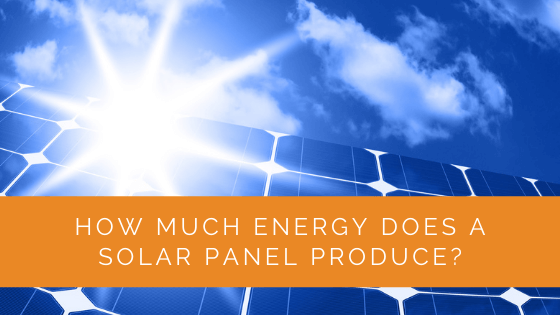One of the common questions that pop up in a homeowner’s mind is, “Can I rely on solar panels to power my whole house?”
The only way to answer that is by figuring how much energy do solar panels produce. You may be curious if solar panels can produce enough energy to keep up with your house’s energy requirements.
Before you install rows of solar panels, don’t you want to know if they can cover just a few bulbs or your whole electricity bill?
This article aims to answer all your questions regarding the energy production capabilities of a solar panel. Let’s see how much energy these solar panels have packed in for you!
Contents
- 1 Key Takeaways
- 2 Why Does Solar Panel Output Matter?
- 3 How to Calculate a Solar Panel’s Output?
- 4 What Is the Annual Productivity in Varying Sunshine Conditions and Solar Panel Wattages?
- 5 How Much Electricity Can a Single Solar Panel Produce?
- 6 What Factors Affect Solar Panel’s Energy Production?
- 7 What’s the Equipment’s Impact on Energy Production?
- 8 How Can I Check If My Solar Panels Are Working Efficiently?
- 9 Case Study: Optimizing Solar Panel Energy Production for a Residential Client
- 10 Expert Insights From Our Solar Panel Installers About How Much Energy a Solar Panel Produces
- 11 Experience Solar Excellence with Us!
- 12 Conclusion
Key Takeaways
- Solar panel output is crucial to determine whether they can meet your energy needs and savings goals for your home.
- Calculating a solar panel’s output involves factors like panel size, efficiency, sunny hours, and more, and online calculators can help provide estimates.
- Various factors such as capacity, efficiency, roof direction, weather, location, and equipment impact a solar panel’s energy production and should be considered when planning a solar installation.
Why Does Solar Panel Output Matter?
The productivity and output of your solar panel will help you reach your energy production target. Depending on the output of a single solar panel, you have to determine how many units does your space requires.
It’s also crucial to determine the solar panel output to meet your energy-saving goals. For example, if you want to save 50% on energy bills, you’ll require more solar panels as opposed to 30% savings.
How to Calculate a Solar Panel’s Output?
You should know that all solar panels have different designs and construction. It’s tricky to make a general statement on how much energy does a solar panel generates.
The best way to go about calculating your solar panel’s energy production is using an online calculator. These online calculators can give you a fair idea about energy production and the amount of savings.
We also have a few common benchmarks that can help you in estimating your unit’s output:
Per Day Output of a Solar Panel
You can work out how electricity your solar panels produce daily with a simple formula. Remember, this formula represents the values in kilowatt-hours (kWh).
First, the size of your solar panel (in sq. mt) x 1000
Next, multiple the results x efficiency of a single solar panel (percentage as a decimal)
Then, the results x number of sunny hours in your region every day
Finally, divide it by 1,000.
For example,
You have a solar panel that is 1.6 square meters in size, then:
6×1000 = 1600
And, your panel has an efficiency of 20%:
1,600×0.2 = 320
And your area receives 4.5 hours of sun every day:
320×4.5 = 1,440
Finally, when you divide it by 1,000, the final output is 1.44 kWh per day. You should also know that the sun hours will greatly vary throughout the year.
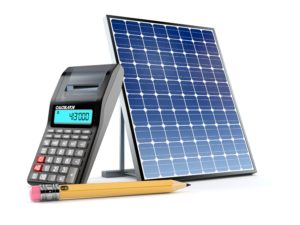
Per Month Output of a Solar Panel
To calculate the energy output of your solar panel for the whole month, figure out the daily amount and multiple it by 30.
So, if your solar panels generate 1.44 kWh every day, then:
1.44 x 30 = 43.2 kWh every month
Per Square Meter of a Solar Panel
Typically, most domestic solar panels sport a 4 kW system. This system has 16 panels, and each one is:
- Designed to produce almost 265 watts of power
- Measure around 1.6 square meters in dimensions
If you want to figure out the output per square meter, you can do it using this formula:
Number of solar panels x total capacity of your solar panel system
Then, capacity ÷ the total size of the solar system.
What Is the Annual Productivity in Varying Sunshine Conditions and Solar Panel Wattages?
We’ve curated tabular data that will help you estimate the annual power output for your solar panels. Also, the table consists of five sunshine conditions:
| Solar Panel Wattage | 1300 kWh/kW | 1500 kWh/kW | 1700 kWh/kW | 1900 kWh/kW | 2100 kWh/kW |
|---|---|---|---|---|---|
| 240 W | 312 | 360 | 408 | 456 | 504 |
| 270 W | 351 | 405 | 459 | 513 | 567 |
| 300 W | 390 | 450 | 510 | 570 | 630 |
| 330 W | 429 | 495 | 561 | 627 | 693 |
| 360 W | 468 | 540 | 612 | 684 | 756 |
This table will give you a faint idea of what output to expect from one solar panel. These were the average sunshine and most common solar panel wattages. However, only the manufacturer can offer you a precise estimate of the power output.
The solar panel manufacturing company will consider factors such as roof orientation and local sun hours. These factors are unique for each user.
How Much Electricity Can a Single Solar Panel Produce?
‘How much’ depends on a few factors that we’ll discuss in the latter part of this article. The manufacturer tests each solar panel to verify how much electricity it will produce in the best-case scenario.
The manufacturers typically conduct a Standard Test Condition (STC) to verify the ultimate power output of the solar panels.
Also, the manufacturer will elaborate on the solar panel’s output range in terms of power rating or offer a wattage within the range of 200 to 400 watts. However, a premium-end and costly solar panel may be able to give you more than that.
The specific panel’s name may also contain the wattage of the product. However, the STC might not stand to be true in real life. It is because of temperature fluctuations and passing clouds.
In a nutshell, your solar panel’s output will vary and fluctuate every time and every day. Well, it’s time to let you know what factors affect the power output of your solar panels.
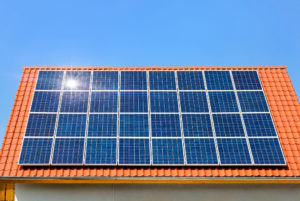
What Factors Affect Solar Panel’s Energy Production?
These are the factors that influence the energy production capability of your solar panel:
Capacity
You should know the maximum capacity of your solar panel that it can produce in ideal environments. Mostly, the manufacturers mention the total capacity as “rated output” or “rated capacity.”
Most of the domestic solar panel systems feature a capacity ranging between 1 kW to 4 kW. You should know that your solar panel cannot produce beyond the rated capacity.
Efficiency
The total energy production also tends to depend on the efficiency of your solar panels. How much sunlight can your solar panels turn into consumable energy?
Solar panels demand stringent conditions, and they are never 100% efficient. These days, the most common household solar panels have an efficiency of about 20%.
You may find solar panels with 40%-50% efficiency, but they tend to be highly expensive. Also, solar panels with higher efficiency use less roof space.
Roof Direction
It would be best to consider your rood direction as it significantly impacts your solar panel’s energy performance. The solar panels work best with south-facing roofs.
It is because the sun is always south of your home. However, even east or west-facing roofs can also do the job. In any case, your focus should be to ensure that your roof receives abundant sunshine!
Roof Angle
The roof angle and shade play a huge role in your solar panel’s energy production output. Firstly, your roof should have a 30-degree angle to give the best performance.
The more straightened roofs might not be able to position the solar panels effectively. Likewise, your roof must be free from blocks or shades.
There shouldn’t be any trees or structures blocking the sunlight. Both shade and angle affect the performance of your solar panel.
Materials
You have to consider the materials if you are trying to analyze how much energy your solar panel produces. Solar panels can equip different materials. Also, the different materials come with varying price tags.
Typically, you’ll find solar panels in two materials:
- Polycrystalline Panels: Polycrystalline panels equip budgeted materials for its construction. The use of average standard materials makes the polycrystalline panels less efficient.
- Monocrystalline Panels: These panels typically use high-grade silicone. The use of high-quality materials makes them more efficient in terms of space and output. These panels tend to generate better output than polycrystalline panels.
Weather and Climate
Regardless of the efficiency and quality of your solar panel, it might still produce a lower output. The only one to blame here is the weather. Often, the clouds block sunlight from reach your solar panels.
Also, dust or snow might cover the surface of the solar panel. The solar installers use weather patterns and historical data to estimate the product’s energy output.
Several other weather-related factors affect the efficacy of your solar panels. It would help if you considered all-year-round weather phenomena to make energy estimations.
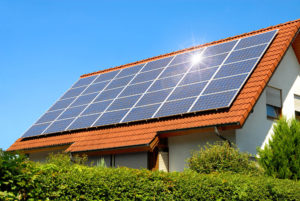
Your Location
Not all locations around the world receive the same amount of sunlight. You can’t expect the same amount of sunlight in both colder and tropical regions.
Also, high altitude locations enjoy the clear sky and high pressure. As a result, the sunlight exposure is more. The more sunlight your solar panels will receive, the higher will be their energy output.
What’s the Equipment’s Impact on Energy Production?
The equipment that makes up your solar power system also affects the ultimate output of your solar panels. Here are some aspects you should note down:
Tolerance Rating of Solar Panels
A first-time buyer might not be aware, but solar panels also come with a tolerance rating. The tolerance rating refers to how much power the panels can produce concerning their wattage.
It means that the solar panels might generate a lower power output than the wattage specified at STC. For this reason, we recommend you look into the tolerance rating of your solar panels as well.
Degradation of Solar Panels
You cannot avoid the damage and degradation in solar panels. Like other electronic devices, solar panels won’t offer smooth and similar performance for their entire lifespan. As the solar panels become older, their energy-producing capacity will also reduce.
This degradation process is inevitable. You will lose a small amount of power output with each passing year. So, while estimating the energy output for your solar panels, you should also consider this factor.
Also, each solar panel includes guarantees and performance warranties. The warranty must state a specific percentage beyond which the performance should not drop.
Solar Panel Mismatch
Anytime you pair up to devices, there’s a likelihood of a loss in output and efficiency. Even though you pair solar panels with the same power rating, they may experience a slight loss.
The solar panel mismatch also depends on the type of inverter you choose. Power optimizers and microinverters operate on a panel-by-panel basis. Also, the industry standard for string inverts is only around 2%.
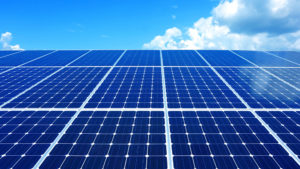
Connections and Wiring
Your solar panels may experience a small amount of loss in electricity due to voltage and heat as it travels around. From the panel to the utility meter, the energy might vary significantly.
However, with a proper and correct connection and wiring, you can minimize that loss. Wiring and connections often make up for energy loss.
Another crucial factor that can reduce output is distance. The inverter’s distance from the utility meter might result in lost power.
Inverters
The solar panels produce energy in the form of DC power. The inverter is responsible for converting this DC power into AC power. Your home and business spaces consume electricity in the form of AC power.
This essential process of energy conversion, unfortunately, accounts for a minimal loss inefficiency. Also, there is no fix to this problem as it is an inevitable step in the process.
How Can I Check If My Solar Panels Are Working Efficiently?
Your solar panels will have a connection to a control panel known as an in-home display. It is a wireless device that you can use to track the electricity generation of your solar panels. In case your solar panels are underperforming, this wireless device can help you identify that.
However, don’t try to tamper with your solar panels if they are not working properly. Instead, the right thing to do is ring your manufacturer or technician.
Case Study: Optimizing Solar Panel Energy Production for a Residential Client
Background
At Solar Panels Network USA, we aim to provide tailored solar solutions that meet the unique energy needs of our clients. Recently, we worked with a homeowner who wanted to understand how much energy solar panels could produce and whether they could power their entire home.
Project Overview
The client’s primary goal was to install a solar panel system that could meet most, if not all, of their household energy requirements. They were particularly interested in understanding the factors that influence solar panel output and how to optimize their system for maximum efficiency.
Implementation
We approached the project with a comprehensive plan, starting with an energy audit and site assessment to determine the best configuration for the solar panel system.
- Energy Audit and Site Assessment: We conducted an in-depth energy audit to analyze the client’s current electricity usage. This included reviewing their utility bills to understand their average monthly and annual energy consumption. We also performed a site assessment to evaluate roof orientation, angle, and shading, which are critical factors in determining solar panel efficiency.
- System Design and Component Selection: Based on the audit and site assessment, we designed a solar panel system incorporating high-efficiency monocrystalline panels. These panels were chosen for their superior performance and space efficiency. We calculated the optimal number of panels needed to meet the client’s energy goals, considering seasonal variations in sunlight.
- Installation: The installation process involved mounting the panels at an angle that maximized sunlight exposure throughout the day. We used advanced mounting systems to ensure the panels were securely installed and positioned for optimal energy capture. The installation was completed within a day, minimizing disruption to the client’s routine.
- Monitoring and Optimization: We installed a monitoring system to track the solar panel performance and energy production in real-time. This system allowed the client to monitor their energy generation and usage, ensuring the panels operated at peak efficiency.
Results
The solar panel system exceeded the client’s expectations, delivering substantial energy savings and meeting their household energy needs effectively. Key outcomes included:
- Increased Energy Production: The high-efficiency monocrystalline panels produced consistent energy output, significantly reducing the client’s reliance on grid electricity.
- Cost Savings: The client saw a noticeable reduction in their electricity bills, achieving significant savings within the first few months of operation.
- Sustainability Impact: By switching to solar energy, the client reduced their carbon footprint, contributing to environmental conservation and sustainability.
- Enhanced Monitoring and Control: The real-time monitoring system provided the client with valuable insights into their energy production and consumption, allowing them to make informed decisions about their energy use.
Summary
Our experience with this project highlights the importance of a tailored approach to solar panel installation. By conducting a thorough energy audit and site assessment, we were able to design and implement a system that maximized energy production and efficiency. At Solar Panels Network USA, we are committed to providing customized solar solutions that help our clients achieve their energy goals and contribute to a sustainable future.
Expert Insights From Our Solar Panel Installers About How Much Energy a Solar Panel Produces
Understanding the energy production capabilities of solar panels is crucial for homeowners. It helps in planning the right system size to meet their energy needs, ensuring they get the most out of their investment.
Lead Solar Installer
Various factors such as panel efficiency, roof orientation, and local weather conditions play a significant role in determining how much energy your solar panels will produce. It’s essential to consider these aspects for optimal performance.
Senior Solar Technician
The energy output of solar panels can vary throughout the year due to seasonal changes in sunlight. However, with proper planning and installation, solar panels can significantly offset your electricity bills and contribute to a sustainable future.
Solar Energy Consultant
Experience Solar Excellence with Us!
Trust in Solar Panels Network USA, where our seasoned experts deliver top-quality solar solutions for homes and businesses nationwide. With a legacy of countless successful installations and a commitment to sustainable energy, we’re your reliable partner in the solar journey. Ready for a brighter, eco-friendly future? Call us now at (855) 427-0058 and harness the power of the sun!
Conclusion
To power your whole house with solar panels, you need several units of them. The energy production capabilities of a solar panel depend on several factors.
Also, the right number of solar panels for your home depends on the energy consumption levels of your home. In any case, you should opt for solar panels after calculating their entire energy production capabilities.
Hopefully, this article answered all your questions related to a solar panel’s total energy production!
About the Author
Solar Panels Network USA stands at the forefront of solar energy solutions, driven by a team of seasoned solar engineers and energy consultants. With over decades of experience in delivering high-quality solar installations and maintenance, we are committed to promoting sustainable energy through customer-centric, tailored solutions. Our articles reflect this commitment, crafted collaboratively by experts to provide accurate, up-to-date insights into solar technology, ensuring our readers are well-informed and empowered in their solar energy decisions.

